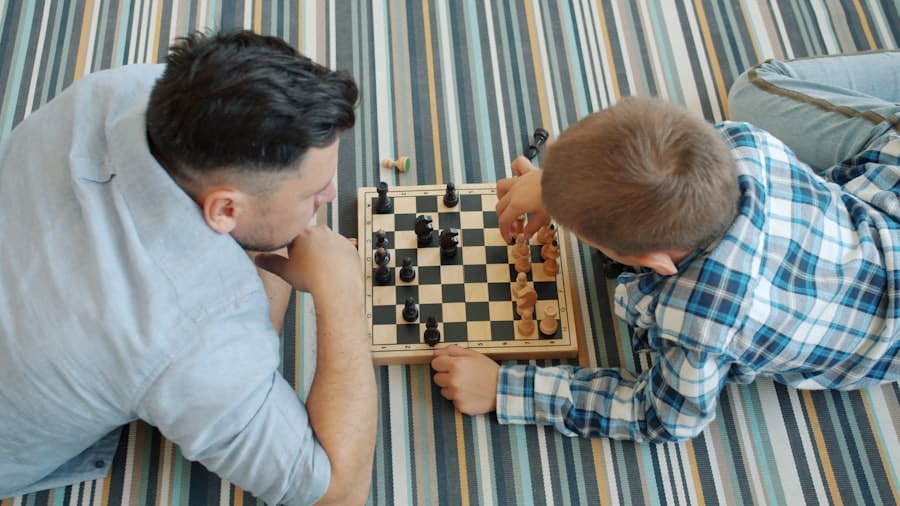In recent years, educational games have gained significant traction within the classroom environment, transforming traditional teaching methodologies. This shift can be attributed to the increasing recognition of the importance of engaging students in their learning processes. As technology has advanced, so too have the tools available for educators, allowing for a more interactive and immersive learning experience.
The integration of gaming elements into education has not only made learning more enjoyable but has also provided a platform for students to explore complex concepts in a more relatable manner. The rise of educational games can also be linked to the changing demographics of students. Today’s learners, often referred to as digital natives, have grown up in an era dominated by technology and interactive media.
They are accustomed to engaging with content through various digital platforms, making traditional lecture-based teaching less effective. As a result, educators are increasingly turning to educational games as a means to capture students’ attention and foster a more dynamic learning environment. This evolution reflects a broader trend in education that prioritizes student engagement and active participation over passive absorption of information.
Key Takeaways
- Educational games are becoming increasingly popular in the classroom as a tool for engaging students and enhancing learning.
- Using educational games in the classroom can lead to improved student motivation, engagement, and academic performance.
- Educational games promote active learning by encouraging students to participate, think critically, and problem-solve in a fun and interactive way.
- Educational games play a crucial role in fostering critical thinking and problem-solving skills in students, preparing them for real-world challenges.
- Educational games can be incorporated into various subjects and curriculums, making learning more enjoyable and effective for students.
The Benefits of Using Educational Games for Learning
The benefits of incorporating educational games into the learning process are manifold. One of the most significant advantages is the enhancement of motivation among students. When learning is gamified, it often becomes more appealing, encouraging students to participate actively rather than merely completing assignments out of obligation.
This heightened motivation can lead to improved academic performance, as students are more likely to invest time and effort into their studies when they find the material engaging. Moreover, educational games can cater to diverse learning styles and preferences. For instance, visual learners may benefit from games that incorporate graphics and animations, while auditory learners might thrive in environments where sound plays a crucial role.
Kinesthetic learners, on the other hand, can engage with physical games that require movement and interaction. By providing multiple avenues for learning, educational games can help ensure that all students have the opportunity to grasp complex concepts in ways that resonate with them personally.
How Educational Games Engage Students in Active Learning

Active learning is a pedagogical approach that emphasizes student participation and engagement in the learning process. Educational games are inherently designed to promote this type of learning by requiring students to interact with content actively rather than passively receiving information. For example, a math game that challenges students to solve problems within a time limit encourages them to think critically and apply their knowledge in real-time scenarios.
This active engagement not only reinforces learning but also helps students develop a deeper understanding of the subject matter. Furthermore, educational games often incorporate elements of competition and collaboration, which can further enhance student engagement. When students work together in teams or compete against one another, they are more likely to invest themselves in the learning experience.
This social aspect of gaming fosters communication skills and teamwork, essential competencies in today’s interconnected world. By creating an environment where students feel comfortable taking risks and making mistakes, educational games can help cultivate a growth mindset that encourages continuous learning and improvement.
The Role of Educational Games in Fostering Critical Thinking and Problem-Solving Skills
Critical thinking and problem-solving skills are essential for success in both academic and real-world contexts. Educational games provide an ideal platform for developing these skills through their inherent design, which often requires players to analyze situations, make decisions, and adapt their strategies based on feedback. For instance, puzzle-based games challenge students to think logically and creatively as they navigate obstacles and devise solutions.
This process not only sharpens their critical thinking abilities but also encourages them to approach problems from multiple angles. Moreover, many educational games incorporate scenarios that mimic real-life challenges, allowing students to practice their problem-solving skills in a safe environment. For example, simulation games that replicate economic systems or environmental issues require players to consider various factors and consequences before making decisions.
This experiential learning approach helps students understand the complexities of real-world problems while honing their analytical skills. As they engage with these scenarios, they learn to evaluate information critically and develop strategies that can be applied beyond the classroom.
Incorporating Educational Games into Different Subjects and Curriculums
The versatility of educational games makes them suitable for a wide range of subjects and curriculums. In mathematics, for instance, games can be designed to reinforce concepts such as addition, subtraction, multiplication, and division through interactive challenges that require students to apply their knowledge in practical situations. Similarly, language arts can benefit from word games that enhance vocabulary and comprehension skills while making learning enjoyable.
Science education also stands to gain from the integration of educational games. Interactive simulations can allow students to conduct virtual experiments or explore complex scientific concepts such as ecosystems or chemical reactions without the constraints of a physical laboratory. History classes can utilize role-playing games that immerse students in historical events, encouraging them to understand different perspectives and the implications of historical decisions.
By tailoring educational games to specific subjects, educators can create a rich tapestry of learning experiences that cater to various interests and academic goals.
Overcoming Challenges in Implementing Educational Games in Education

Despite the numerous benefits associated with educational games, several challenges can arise during their implementation in educational settings. One significant hurdle is the potential resistance from educators who may be accustomed to traditional teaching methods. Some teachers might view educational games as distractions rather than valuable tools for learning.
To overcome this resistance, it is essential to provide professional development opportunities that demonstrate the effectiveness of educational games in enhancing student engagement and achievement. Another challenge lies in the accessibility of technology required for implementing educational games. Not all schools have equal access to digital resources or devices necessary for game-based learning.
This disparity can create inequities among students and limit the effectiveness of educational games as a universal teaching strategy. To address this issue, schools must prioritize equitable access to technology and consider alternative methods for incorporating games into their curriculum, such as using board games or low-tech options that do not rely on digital devices.
The Future of Educational Games and Their Impact on Learning
As technology continues to evolve, so too will the landscape of educational games. The future promises even more innovative approaches to game-based learning, including the integration of artificial intelligence (AI) and virtual reality (VR). AI-driven educational games could provide personalized learning experiences tailored to individual student needs, adapting challenges based on performance levels and learning styles.
This level of customization has the potential to enhance student engagement significantly while ensuring that each learner receives the support they require. Virtual reality offers another exciting avenue for educational gaming by creating immersive environments where students can explore complex concepts firsthand. Imagine a history lesson where students can virtually walk through ancient civilizations or a science class where they can conduct experiments in a simulated lab setting without any safety concerns.
These advancements will likely redefine how educators approach teaching and learning, making education more interactive and engaging than ever before.
Tips for Selecting and Using Educational Games Effectively in the Classroom
When selecting educational games for classroom use, educators should consider several key factors to ensure their effectiveness. First and foremost, it is crucial to align the game with specific learning objectives and curricular goals. A game that does not directly support the intended outcomes may lead to confusion or disengagement among students.
Additionally, educators should evaluate the age appropriateness of the game, ensuring it is suitable for their students’ developmental levels.
While it is essential for a game to be enjoyable, it should also provide meaningful learning experiences that reinforce key concepts or skills.
Educators should seek out games that encourage critical thinking, collaboration, and problem-solving rather than those that rely solely on rote memorization or repetitive tasks. Finally, incorporating reflection into the gaming experience can enhance its educational impact. After playing an educational game, teachers should facilitate discussions or activities that encourage students to reflect on what they learned and how they applied their knowledge during gameplay.
By thoughtfully selecting and implementing educational games in the classroom, educators can create an engaging learning environment that fosters curiosity, critical thinking, and a lifelong love for learning among their students.
In the realm of educational technology, the article “How Educational Games Are Bridging Learning and Play” highlights the innovative ways in which interactive games are transforming traditional learning environments. A related article that delves into the broader impact of technology on education and media is available on Recode, a technology news website owned by Vox Media. This article explores the intersection of technology and education, providing insights into how digital advancements are reshaping the way we consume information and learn. For more information, you can read the full article on Recode by visiting this link.
FAQs
What are educational games?
Educational games are games designed with the primary purpose of teaching or learning. They are intended to provide an enjoyable and engaging way for players to acquire new knowledge or skills.
How do educational games bridge learning and play?
Educational games combine elements of entertainment and education to create an engaging and interactive learning experience. By integrating educational content into a game format, players are able to learn and practice new concepts in a fun and enjoyable way.
What are the benefits of educational games?
Educational games can help improve cognitive skills, problem-solving abilities, and critical thinking. They can also enhance motivation and engagement in learning, as well as provide a more interactive and personalized learning experience.
What are some examples of educational games?
Examples of educational games include math games, language learning games, science-based games, history and geography games, and games that teach coding or computer programming skills. These games can be found in various formats, including digital apps, online platforms, and physical board games.
How are educational games used in formal education?
Educational games are increasingly being integrated into formal education settings, such as classrooms and after-school programs. Teachers and educators use these games to supplement traditional teaching methods, reinforce learning concepts, and provide students with a more interactive and hands-on learning experience.

